Your cart is currently empty!
Search results for: “69”
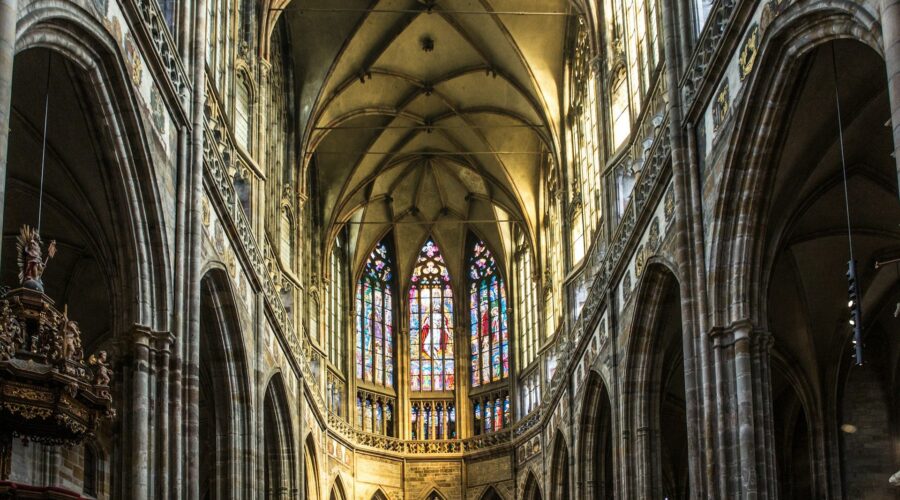
St. Alphonsus Liguori: A Guiding Light in Morality and Devotion
Saint Alphonsus Liguori, revered as the Doctor of Moral Theology, was an eminent figure in the Catholic Church renowned for his extensive writings on moral theology and his extraordinary devotion to the Blessed Virgin Mary.
Early Life and Education
Birth and Family
Alphonsus Maria de’ Liguori was born on September 23, 1696, in Marianella, Italy, to a wealthy and influential family. His father, Giuseppe Liguori, was a naval captain, while his mother, Anna Cavalieri, was a devout Catholic.
Education
Alphonsus displayed exceptional academic prowess from a young age. He excelled in the study of law, earning a doctorate in civil and ecclesiastical law at the University of Naples in 1713.
Conversion to the Priesthood
Disillusionment and Discernment
Despite his promising legal career, Alphonsus experienced a profound conversion experience in 1723. After losing an important case, he was deeply disillusioned by the corrupt and unjust practices prevalent in the legal profession.
Seeking solace, Alphonsus turned to prayer and spiritual reflection. He discerned a call to the priesthood, believing he could serve God and humanity more effectively in this role.
Ordination and Early Ministry
Alphonsus was ordained a priest on December 21, 1726. He dedicated himself to serving the poor and marginalized in the slums of Naples. His compassionate and zealous ministry earned him great respect and admiration from the people.
Founding the Redemptorists
Mission to the Poor and Abandoned
In 1732, Alphonsus founded the Congregation of the Most Holy Redeemer, also known as the Redemptorists. The primary mission of the congregation was to preach to the poor and abandoned in remote and neglected areas.
Rule of Life
Alphonsus authored the Rule of Life for the Redemptorists, emphasizing humility, simplicity, and apostolic zeal. The congregation quickly grew, establishing communities throughout Italy and beyond.
Moral Theology and Spiritual Writings
Summa Theologica Moralis
Alphonsus Liguori is widely recognized as one of the greatest moral theologians of all time. His magnum opus, Summa Theologica Moralis, published in 1748, is a comprehensive treatise on moral theology that remains an authoritative source in Catholic moral teaching.
Other Notable Works
In addition to his Summa Theologica Moralis, Alphonsus wrote numerous other spiritual and theological works, including:
- The Glories of Mary
- The Practice of the Love of Jesus Christ
- The Way of Salvation
- The Hidden Treasure
Devotion to the Blessed Virgin Mary
Marian Advocate
Alphonsus Liguori had an ardent devotion to the Blessed Virgin Mary. He believed that devotion to Mary was essential for Christian perfection.
The Glories of Mary
Alphonsus’s book “The Glories of Mary” is considered one of the most comprehensive and eloquent treatises on Marian devotion ever written.
Later Years and Sainthood
Bishop of Sant’Agata de’ Goti
In 1762, Alphonsus was appointed Bishop of Sant’Agata de’ Goti in southeastern Italy. He served as bishop for thirteen years, tirelessly ministering to his flock.
Decline in Health and Death
In his later years, Alphonsus’s health declined due to severe arthritis and other ailments. He died on August 1, 1787, at the age of 90.
Canonization
Alphonsus Liguori was canonized a saint by Pope Gregory XVI in 1839. He is considered the patron saint of confessors, moral theologians, and the city of Naples.
Legacy
Doctor of Moral Theology
Saint Alphonsus Liguori’s contributions to moral theology are immense. His writings continue to guide and inspire theologians and spiritual directors worldwide.
Marian Devotion
Alphonsus’s profound devotion to the Blessed Virgin Mary has left an enduring legacy in the Catholic Church. His writings and teachings on Marian devotion continue to inspire and enrich the spiritual lives of countless believers.
Founder of the Redemptorists
The Congregation of the Most Holy Redeemer, founded by Saint Alphonsus Liguori, remains a vibrant and active religious congregation today. The Redemptorists continue to carry out Alphonsus’s mission of preaching to the poor and abandoned in all corners of the globe.
Table: Key Dates in the Life of Saint Alphonsus Liguori
| Event | Date |
|—————–|—————|
| Birth | September 23, 1696 |
| Conversion | 1723 |
| Ordination | December 21, 1726 |
| Founding of the Redemptorists | 1732 |
| Publication of Summa Theologica Moralis | 1748 |
| Appointed Bishop of Sant’Agata de’ Goti | 1762 |
| Death | August 1, 1787 |
| Canonization | 1839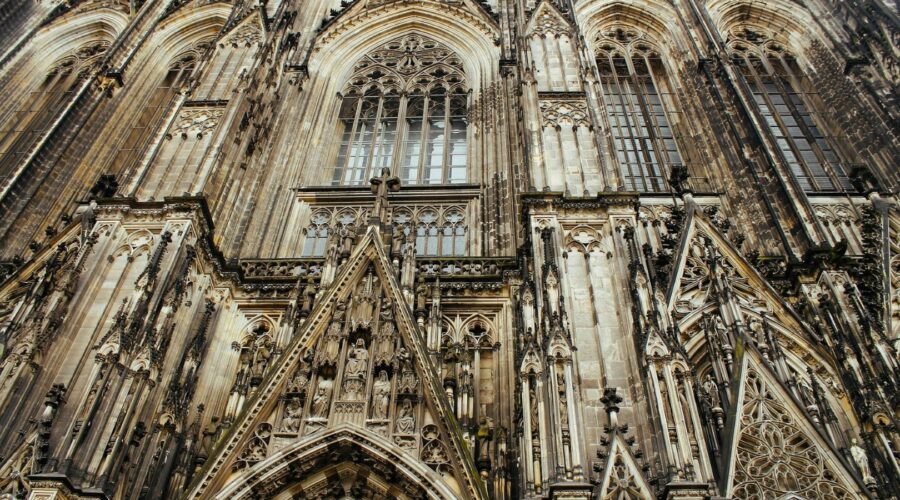
Unveiling the Grandeur of the Basilica of the National Shrine of the Immaculate Conception
A Majestic Beacon of Faith
Nestled in the heart of Washington D.C., the Basilica of the National Shrine of the Immaculate Conception stands as a magnificent testament to the Catholic faith. This towering sanctuary, the largest Catholic church in North America, captivates visitors with its architectural grandeur and spiritual significance.
History
Conception and Construction
The seed for this national shrine was planted in 1846, when Bishop John Hughes envisioned a monumental church in honor of the Immaculate Conception. However, it wasn’t until 1920 that Archbishop James Gibbons officially dedicated the site, and construction commenced in 1924.
Dedication and Recognition
The basilica’s grand opening ceremony took place on December 8, 1959, the feast of the Immaculate Conception. In 1969, Pope Paul VI elevated the shrine to the status of a minor basilica. Today, it remains an active parish and a popular destination for pilgrims and tourists alike.
Architecture
Byzantine-Romanesque Style
The basilica’s design draws inspiration from both Byzantine and Romanesque architectural traditions. Its massive facade features a central archway adorned with intricate carvings, while the interior boasts soaring vaults supported by grand marble columns.
Mosaics and Frescoes
The basilica’s interior is adorned with over 100,000 square feet of mosaics depicting biblical scenes, saints, and symbols. The most notable mosaic, “Christ in Majesty,” adorns the sanctuary’s apse. Additionally, the nave features beautiful frescoes by renowned artist William Van Benthuysen.
Significance
National Shrine
The basilica serves as the national shrine of the United States, a testament to the Catholic faith’s strong presence in the country. It is visited by millions of pilgrims and tourists each year, who come to pray, experience the grandeur of the architecture, and learn more about the history and theology of the Catholic Church.
Musical Heritage
The basilica has a rich musical heritage. Its organ, built by Casavant Frères of Canada, is one of the largest in the world. The sanctuary also features a 100-voice choir, which performs regularly during Masses and other liturgical celebrations.
Pilgrimage
Visiting the Basilica
Pilgrims and tourists alike are welcome to visit the basilica. Mass is celebrated daily, and guided tours are available. Special events, such as concerts and lectures, are also held throughout the year.
Admission Information
Admission to the basilica is free. Guided tours are available for a nominal fee. For more information on hours and tours, visit the basilica’s website: www.nationalshrine.org.
Tips for Visitors
Dress Code
When visiting the basilica, it is recommended to dress respectfully, according to Catholic liturgical norms.
Photography
Photography is permitted within the basilica, but flash photography is not allowed.
Accessibility
The basilica is accessible to visitors with disabilities. Wheelchairs are available at the main entrance.
Language
Masses and tours are available in multiple languages, including English, Spanish, and French. Check the basilica’s website for current schedules.
Conclusion
The Basilica of the National Shrine of the Immaculate Conception is a masterpiece of architecture and a profound expression of faith. Its grandeur and significance make it a must-see destination for anyone visiting Washington D.C. Whether you are seeking spiritual inspiration or simply appreciating the beauty of the built environment, this basilica is sure to leave a lasting impression.
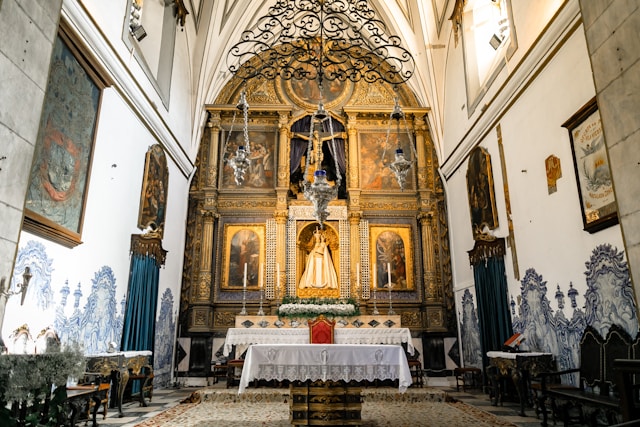
Discover the Essence of Christian Life Church: A Comprehensive Guide
What is Christian Life Church?
Christian Life Church (CLC) is a vibrant and dynamic Christian congregation rooted in biblical principles and committed to fostering spiritual growth, community, and service. Established in 1969, CLC has a rich history of impacting countless lives through its diverse ministries and community outreach programs.
Core Values and Beliefs
- The Authority of Scripture: CLC believes that the Bible is the authoritative and infallible Word of God, providing the foundation for faith and living.
- The Trinity: The church affirms the doctrine of the Trinity, acknowledging God as Father, Son (Jesus Christ), and Holy Spirit.
- Salvation through Jesus Christ: CLC proclaims that salvation is solely through faith in Jesus Christ, who died on the cross and rose again, granting eternal life.
- Spirit-Filled Living: The church encourages believers to be filled with the Holy Spirit, enabling them to live a life of power, purpose, and witness.
- Kingdom-Mindedness: CLC seeks to extend God’s Kingdom by reaching out to the community, supporting missions, and demonstrating Christian values in all aspects of life.
Ministries and Programs
Worship Services
CLC offers weekly worship services that include inspiring music, dynamic preaching, and opportunities for prayer and fellowship.
Life Groups
Life Groups are small, home-based gatherings that provide a space for Bible study, spiritual encouragement, and community building.
Youth and Children’s Ministries
The church has dedicated programs for children and youth, focusing on age-appropriate spiritual development, mentorship, and fun activities.
Missions and Outreach
CLC is actively involved in missions both locally and internationally, partnering with organizations to provide aid, support, and share the Gospel.
Community Involvement
The church engages in community outreach programs such as food pantries, homeless assistance, and volunteer opportunities.
Leadership and Staff
CLC is led by a dedicated team of pastors and staff who are passionate about serving the congregation and fulfilling the church’s mission. The pastoral team brings a wealth of experience, wisdom, and spiritual guidance.
Location and Contact Information
Christian Life Church is conveniently located at [Address]. You can contact the church office at [Phone Number] for any inquiries or to learn more about membership and involvement opportunities.
Benefits of Attending Christian Life Church
- Spiritual Growth: CLC provides a transformative environment that fosters personal and spiritual growth through worship, teaching, and community engagement.
- Authentic Community: The church emphasizes the importance of fellowship and support, creating a sense of belonging and connection among believers.
- Purposeful Living: CLC equips its members to live a life of purpose and impact, inspiring them to make a positive difference in the world.
- Service Opportunities: The church offers a wide range of service opportunities, allowing individuals to use their gifts and talents to bless others.
- Kingdom Impact: By participating in Christian Life Church, individuals become part of a larger movement that seeks to advance God’s Kingdom and make a lasting impact on society.
Conclusion
Christian Life Church is more than just a building or organization; it is a vibrant community of believers united by their faith in Jesus Christ. Whether you are seeking spiritual growth, authentic fellowship, or opportunities to serve, CLC welcomes you to experience the transformative power of the Gospel and become part of its mission to make a difference in the world.
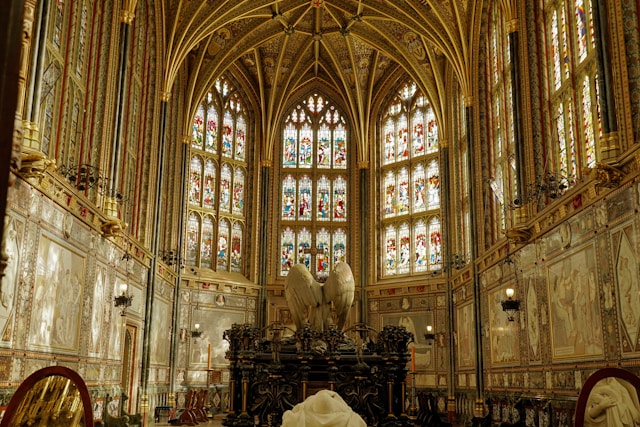
Assemblies of God: A Comprehensive Guide to the Pentecostal Denomination
Introduction
The Assemblies of God (AOG) is a Pentecostal Christian denomination that originated in the early 20th century. It is known for its emphasis on the gifts of the Holy Spirit, such as speaking in tongues, prophecy, and healing. Today, the AOG is one of the largest Pentecostal denominations in the world, with over 69 million members in 220 countries.
History
The Assemblies of God was founded in 1914 in Hot Springs, Arkansas. A group of Pentecostal ministers, including E.N. Bell and Howard A. Goss, came together to form a new denomination that would be committed to the full gospel, including the baptism of the Holy Spirit and the gifts of the Spirit.
The AOG grew rapidly in the early years, spreading throughout the United States and beyond. By the 1950s, the denomination had become one of the largest Pentecostal denominations in the world. Today, the AOG continues to grow, with new churches being planted every year.
Beliefs
The AOG shares the core beliefs of Pentecostalism, including the following:
- The Bible is the inspired Word of God and is the final authority for faith and practice.
- Jesus Christ is the Son of God and the only way to salvation.
- The Holy Spirit is a person who indwells believers and empowers them for ministry.
- The gifts of the Spirit, such as speaking in tongues, prophecy, and healing, are available to all believers today.
- The Church is the body of Christ and is called to be a witness to the world.
Practices
The AOG is known for its vibrant worship services, which often include singing, dancing, and speaking in tongues. The denomination also emphasizes prayer, Bible study, and evangelism.
The AOG has a variety of ministries, including Sunday school, youth groups, and missions. The denomination also operates a number of schools and colleges.
Church Government
The AOG is a decentralized denomination, meaning that each local church is autonomous. However, the denomination does have a General Council that meets every two years to set policy and direction for the denomination.
The AOG is led by a General Superintendent, who is elected by the General Council. The current General Superintendent is Doug Clay.
Conclusion
The Assemblies of God is a vibrant and growing Pentecostal denomination that is committed to the full gospel. The denomination has a rich history and a strong commitment to its core beliefs. The AOG is a global denomination that is making a difference in the world today.
Additional Resources
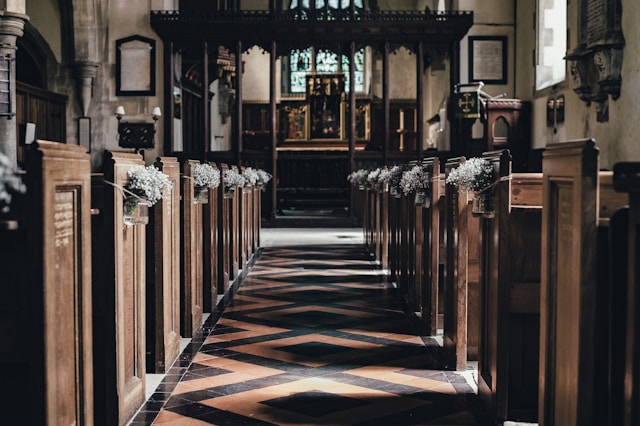
Pope Francis: A Comprehensive Guide to the Catholic Church’s Current Leader
Introduction
Pope Francis, the 266th pope of the Catholic Church, has been a transformative figure since his election in 2013. His humble demeanor, open-mindedness, and commitment to social justice have captivated people around the world. This guide will delve into Pope Francis’s life, papacy, and the significant impact he has made on the Catholic Church and beyond.
Early Life and Vocation
Jorge Mario Bergoglio was born in Buenos Aires, Argentina, on December 17, 1936. He studied chemical technology before entering the Society of Jesus (Jesuits) in 1958. He was ordained a priest in 1969 and served in various pastoral roles in Argentina.
Episcopal Ministry
In 1992, Bergoglio was appointed auxiliary bishop of Buenos Aires. He became archbishop in 1998 and cardinal in 2001. As archbishop, he focused on the poor and marginalized, advocating for social justice and dialogue with other faiths.
Papal Election and Pontificate
Election and Papal Name
On March 13, 2013, the College of Cardinals elected Bergoglio as the new pope. He took the name Francis, in honor of Saint Francis of Assisi, known for his humility and love for the poor.
Major Themes and Initiatives
- Social Justice and Poverty: Pope Francis has consistently emphasized the need to address global poverty and inequality. He has called for economic reforms, debt relief, and the care of the marginalized.
- Environmental Protection: The pope has been a vocal advocate for environmental protection and climate action. His encyclical Laudato Si’ (2015) called for ecological conversion and a radical change in human behavior towards the planet.
- Interfaith Dialogue: Pope Francis has made interfaith dialogue a priority. He has met with leaders of other religions, promoting mutual understanding and cooperation.
- Church Reform and Transparency: The pope has initiated reforms within the Catholic Church, including efforts to combat sexual abuse, promote financial transparency, and increase the participation of the laity in decision-making.
Encyclicals and Apostolic Exhortations
Encyclical/Exhortation Year Major Themes Lumen Fidei 2013 The nature of faith Evangelii Gaudium 2013 The joy of the Gospel and renewal of the Church Laudato Si’ 2015 Environmental protection and climate change Amoris Laetitia 2016 On love in the family Gaudete et Exsultate 2018 On the call to holiness in the modern world Impact on the Catholic Church
Pope Francis’s papacy has had a profound impact on the Catholic Church:
- Increased Openness and Inclusivity: Pope Francis has fostered a more welcoming and inclusive church, reaching out to marginalized groups, such as LGBTQ+ people.
- Emphasis on Evangelization: The pope has called for a missionary church, encouraging Catholics to share their faith and invite others into the church.
- Renewed Focus on Pastoral Care: Pope Francis has emphasized the importance of pastoral care, encouraging priests to be close to their communities and to accompany people in their faith journeys.
Impact on the Wider World
Pope Francis’s message has resonated beyond the Catholic Church, reaching people of different faiths and backgrounds:
- Global Advocate for Peace: The pope has used his platform to denounce violence and promote peace worldwide.
- Voice for the Poor and Marginalized: Pope Francis has become a powerful voice for the poor, calling for an end to poverty and inequality.
- Environmental Leadership: His encyclical Laudato Si’ has inspired environmental movements and raised awareness about the need to protect the planet.
Challenges and Controversies
While Pope Francis has been widely praised, his papacy has not been without challenges and controversies:
- Internal Disagreements: Some traditionalist Catholics have criticized Pope Francis’s reforms and teachings, claiming he is straying from the Church’s doctrine.
- Sexual Abuse Crisis: The pope has faced criticism for his handling of the sexual abuse crisis within the Catholic Church.
- Relationship with China: Pope Francis’s efforts to improve relations with China have faced obstacles and raised concerns about religious freedom in the country.
Conclusion
Pope Francis has been a transformative figure in the Catholic Church and beyond. His humble demeanor, commitment to social justice, and emphasis on interfaith dialogue have captivated people worldwide. While his papacy has faced challenges, he has left a lasting impact on the Church and the wider world. Pope Francis’s legacy is likely to be debated for years to come, but there is no doubt that he will be remembered as one of the most influential popes in history.
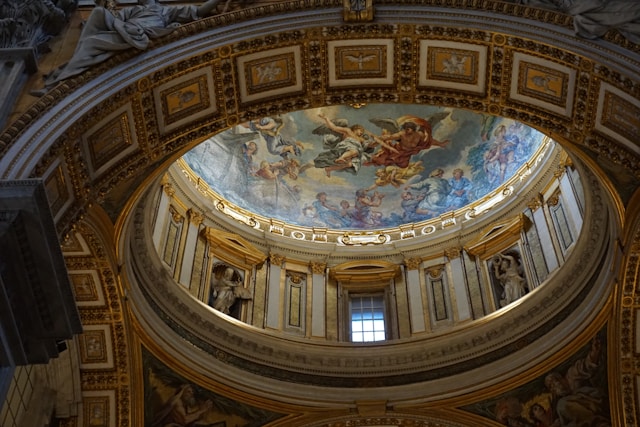
Explore the Historic Sanctuary: A Comprehensive Guide to the Church of the Holy Sepulchre
Introduction
Nestled in the heart of Jerusalem, the Church of the Holy Sepulchre stands as a testament to Christianity’s most sacred beliefs. For centuries, pilgrims from around the globe have journeyed to this ancient site, believed to be the site of Jesus Christ’s crucifixion and resurrection. With its impressive architectural marvels and historical significance, the Church of the Holy Sepulchre is an unmissable destination for pilgrims and history enthusiasts alike.
Historical Significance
The Crucifixion and Resurrection
According to Christian tradition, the Church of the Holy Sepulchre marks the sites of Jesus’ crucifixion at Golgotha and his entombment within a nearby cave. The Gospels of Matthew, Mark, Luke, and John describe Jesus’ final moments on Calvary, where he was crucified between two thieves and died on the cross. The Gospels also recount that his body was laid to rest in a tomb that was later discovered empty, marking his miraculous resurrection.
Early Christian History
In the 4th century, the Roman Emperor Constantine I ordered the construction of the first church on the site, known as the Basilica of the Holy Sepulchre. This magnificent structure was completed in 335 AD and became a major pilgrimage site for Christians throughout the Byzantine Empire. Over the centuries, the church was damaged and rebuilt several times, including after the Muslim conquest of Jerusalem in the 7th century.
Architectural Marvels
Rotunda and Aedicule
The centerpiece of the Church of the Holy Sepulchre is the Rotunda, a circular hall topped by a dome. At its center stands the Aedicule, a small shrine that marks the traditional site of Jesus’ tomb. The Aedicule is covered in marble and adorned with intricate carvings. Pilgrims often queue to enter the Aedicule and touch the stone slab said to have been Christ’s burial site.
Stone of Anointing
Near the entrance to the church lies the Stone of Anointing, a large marble slab where it is believed Jesus’ body was prepared for burial. Pilgrims often stop to pray and anoint themselves with oil at this sacred spot.
Calvary Chapel and Golgotha
Located on the upper level of the church, Calvary Chapel marks the traditional site of Jesus’ crucifixion. A silver-domed altar marks the spot where the cross is believed to have stood. Adjoining Calvary Chapel is the Golgotha Chapel, where the rock of Golgotha, said to be part of Jesus’ crucifixion site, is venerated.
Denominational Ownership and Shared Custody
The Church of the Holy Sepulchre is jointly administered by six Christian denominations: the Greek Orthodox, Armenian Apostolic, Roman Catholic, Syrian Orthodox, Ethiopian Orthodox, and Coptic Orthodox Churches. Each denomination has its own space within the church and conducts its own liturgies. This unique arrangement has often led to tensions and disputes among the denominations, but it has also ensured that the church has remained a center of Christian pilgrimage for centuries.
Pilgrimage and Significance
The Church of the Holy Sepulchre remains a primary destination for Christian pilgrims from around the world. Pilgrims often travel to the site to experience the sacred space where Jesus is believed to have died and risen. They pray, meditate, and walk the Via Dolorosa, the path that Jesus is said to have walked from his trial to his crucifixion.
Significance to Christians
For Christians, the Church of the Holy Sepulchre is more than just a historical site. It represents the central tenets of their faith: the suffering, death, and resurrection of Jesus Christ. The church serves as a reminder of the ultimate triumph of good over evil and the promise of eternal life for those who believe.
Practical Information
Visiting the Church
The Church of the Holy Sepulchre is open to visitors daily from sunrise to sunset. Visitors are advised to dress respectfully and be prepared for security checks. Guided tours are available for those who wish to learn more about the church’s history and significance.
Accommodation and Nearby Attractions
Jerusalem offers a wide range of accommodation options for visitors. Many hotels are located within easy walking distance of the Church of the Holy Sepulchre. The Old City of Jerusalem, where the church is situated, is also home to numerous other historical and religious sites, including the Western Wall, the Dome of the Rock, and the Al-Aqsa Mosque.
Conclusion
The Church of the Holy Sepulchre is a living testament to the historical and spiritual significance of Christianity. Its architectural marvels, historical importance, and shared custody by multiple denominations make it a unique and unforgettable destination. Whether you are a pilgrim seeking spiritual enrichment or a history enthusiast marveling at its ancient walls, the Church of the Holy Sepulchre is a place that will leave an everlasting impression.
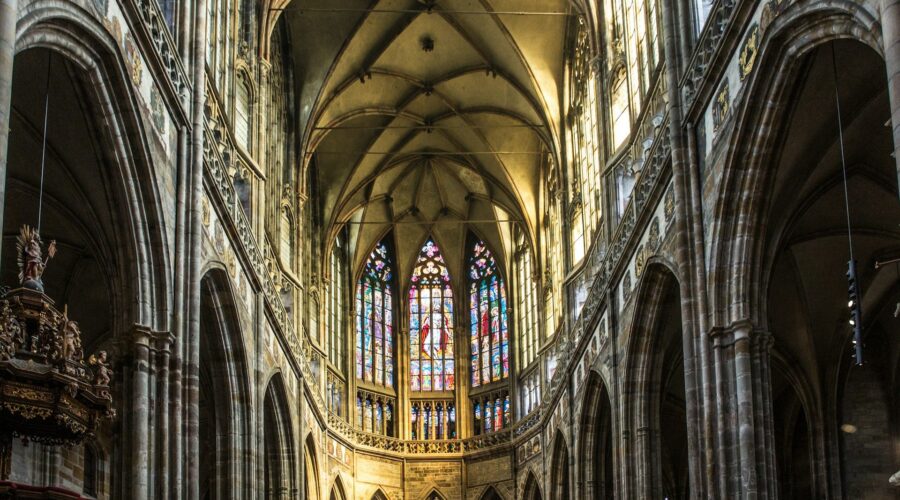
Grace Community Church: A Guide to John MacArthur’s Controversial Ministry
Introduction
Grace Community Church (GCC) is an independent, fundamentalist Baptist megachurch located in Sun Valley, California. It is led by controversial pastor John MacArthur, who has been both praised and criticized for his conservative views on theology, culture, and politics.
John MacArthur: Biography and Beliefs
Early Life and Ministry
John MacArthur was born in 1939 and grew up in Los Angeles. He became a Christian at a young age and began preaching in his teens. He earned a B.A. in theology from Bob Jones University and a Th.M. and D.D. from Talbot Theological Seminary.
In 1969, MacArthur became pastor of Grace Community Church, which was then a small congregation of 80 members. Under his leadership, GCC has grown to become one of the largest churches in the United States, with an average attendance of over 10,000.
Theological Views
MacArthur is known for his conservative theological views. He believes that the Bible is the literal and inerrant Word of God and that the Gospel message is solely about salvation by grace through faith in Jesus Christ.
MacArthur has been critical of contemporary movements within Christianity, such as the emerging church and the prosperity gospel. He is also a strong advocate for biblical creationism and opposes the teaching of evolution.
Grace Community Church: Controversies and Criticism
Handling of COVID-19 Pandemic
GCC has been involved in several controversies in recent years, most notably over its handling of the COVID-19 pandemic. In May 2020, MacArthur defied county health orders by holding indoor church services, arguing that the government had no authority to restrict religious gatherings.
This decision led to significant backlash and several lawsuits. GCC was fined and MacArthur was charged with a misdemeanor, although the charges were later dropped.
Allegations of Abuse
In 2021, several women came forward with allegations that they had been abused by MacArthur. The allegations ranged from sexual harassment to spiritual abuse.
GCC launched an independent investigation into the allegations, but the results have not been made public. MacArthur has denied all wrongdoing.
Other Controversies
GCC has also been criticized for its opposition to homosexuality, its support for the death penalty, and its political activism. MacArthur has been accused of promoting division and intolerance.
GCC’s Impact and Legacy
Seminary and Bible College
In addition to its main church campus, GCC operates a seminary (The Master’s University) and a Bible college (The Master’s College). These institutions have trained thousands of pastors and missionaries.
Publishing and Media
GCC has a large publishing arm that produces books, Bibles, and other resources. MacArthur has also hosted a popular radio program for over 40 years.
GCC’s influence extends beyond its own congregation through its publications, media outreach, and training programs for church leaders.
Conclusion
Grace Community Church is a complex and controversial institution led by a polarizing figure in John MacArthur. Its conservative theological views and its involvement in various controversies have made it a subject of both praise and criticism.
Despite the controversies, GCC remains a large and influential church with a significant impact on American Christianity and culture.
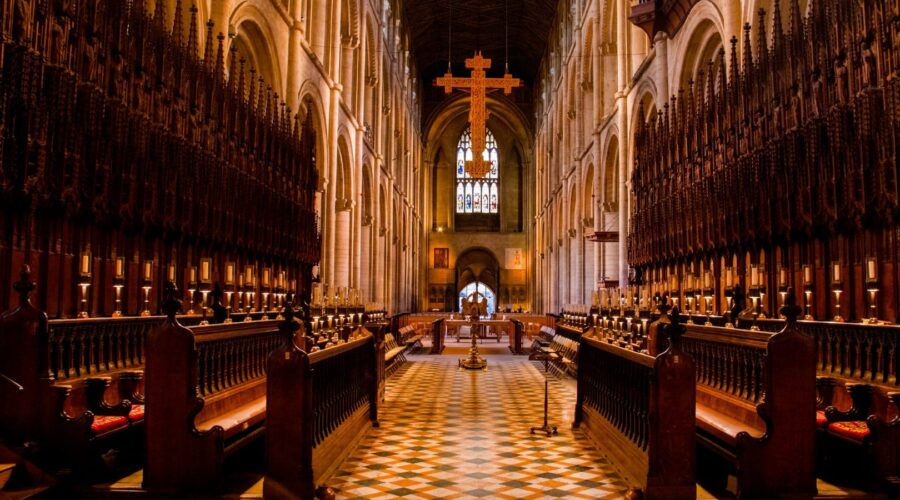
Discover the Rich History, Architecture, and Significance of Trinity Church
Nestled in the heart of Manhattan’s Financial District, Trinity Church is an iconic landmark that has witnessed countless historical events and architectural transformations over the centuries.
A Journey Through Time
Colonial Beginnings (1697-1789)
In 1697, Governor Benjamin Fletcher gifted land to the Anglican parish of Trinity Church, marking the start of its existence. The first wooden church was built in 1698, serving as a place of worship for the growing British population.
Federal Period (1789-1839)
After the American Revolution, Trinity Church became an Episcopal parish. During this period, the iconic spire was added to the church in 1790, designed by architect John McComb Jr. The spire became a symbol of the United States’ growing wealth and power.
Victorian Era (1839-1900)
The 19th century witnessed significant expansion and renovation at Trinity Church. In 1839, the nave was reconstructed by Richard Upjohn, and in 1846, the chancel was redesigned by James Renwick Jr. These renovations transformed the church into a Gothic Revival masterpiece.
Architectural Marvel
Gothic Revival Design
Trinity Church exemplifies the Gothic Revival style, incorporating pointed arches, ribbed vaults, and flying buttresses. The intricate carvings, stained glass windows, and vaulted ceilings evoke a sense of grandeur and reverence.
The Spire
Standing at 284 feet, the spire of Trinity Church is one of the most recognizable landmarks in New York City. Its elegant shape and filigree detailing have made it an iconic symbol of the city’s skyline.
Interior Adornments
The interior of Trinity Church is equally impressive. The chancel features a magnificent altarpiece by Benjamin West, depicting the Resurrection of Christ. The nave is lined with marble columns and contains a pulpit carved from a single block of mahogany.
Spiritual and Cultural Center
Religious Significance
As the oldest parish in New York City, Trinity Church has played a vital role in the city’s spiritual development. The church has fostered interfaith dialogue and provided support to the community throughout its history.
Community Outreach
Trinity Church is deeply involved in social outreach programs, serving the homeless, providing job training, and offering educational opportunities. The church’s community center, Trinity Commons, is a hub for these initiatives.
Cultural Legacy
Trinity Church has hosted numerous historical events and celebrations. It served as a meeting place for the Continental Army during the Revolutionary War and hosted the first presidential inauguration of George Washington in 1789.
Visitor Information
Tours and Services
Trinity Church offers guided tours for visitors to explore its architecture, history, and artifacts. Visitors can also attend daily services and special programs held throughout the year.
Location and Hours
75 Broadway
New York, NY 10006Monday-Saturday: 10:00 AM – 4:00 PM
Sunday: 12:00 PM – 4:00 PMConclusion
Trinity Church stands as a testament to the resilience and evolution of New York City. Its architectural beauty, historical significance, and spiritual impact have made it an enduring landmark that continues to inspire and uplift visitors and the city it calls home.
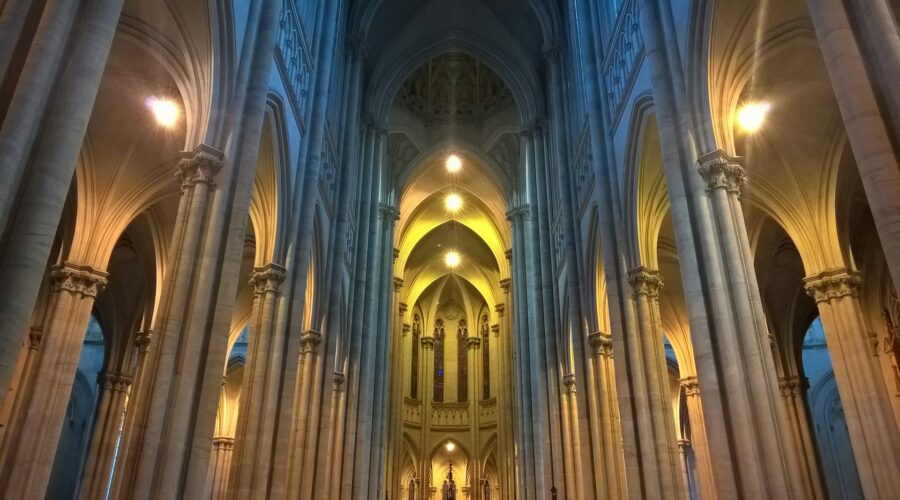
Christ Church Cathedral: A Majestic Symbol of Dublin’s History and Culture
Introduction
Christ Church Cathedral, nestled in the heart of Dublin, Ireland, is an architectural masterpiece that has stood as a testament to faith, history, and culture for over a millennium. Its imposing presence and intricate details have made it not only a spiritual sanctuary but also a cherished landmark that attracts visitors from around the globe.
History and Architecture
Early Origins
The origins of Christ Church Cathedral can be traced back to the 11th century when the Viking king Sitric Silkenbeard converted to Christianity and founded a church on the site. The cathedral has undergone numerous renovations and expansions over the centuries, reflecting Dublin’s changing architectural styles.
Norman Influence
In the 12th century, the Normans conquered Ireland and significantly altered the cathedral’s structure. They extended the nave, added a transept, and built a new chancel. The Norman influence is evident in the cathedral’s arched doorways, vaulted ceilings, and sturdy columns.
Gothic Additions
During the 14th and 15th centuries, the cathedral underwent further Gothic renovations, including the addition of flying buttresses, pointed arches, and stained-glass windows. The Lady Chapel, built in the 15th century, is a particularly exquisite example of Gothic architecture, with its delicate tracery and vaulted ceiling.
Interior Treasures
The Crypt
One of the most fascinating features of Christ Church Cathedral is its crypt, which houses a collection of medieval artifacts and exhibits. Visitors can explore the remains of the original Viking church, marvel at the 12th-century carvings, and learn about the cathedral’s rich history.
The Treasury
The cathedral’s treasury houses an impressive collection of ecclesiastical artifacts, including the Crozier of St. Kevin, believed to have been used by the patron saint of Dublin in the 6th century. Visitors can also admire the 11th-century Dublin Penny, the oldest known Irish coin.
The Great Organ
Installed in 1690, the Great Organ is a masterpiece of musical craftsmanship. With its 5000 pipes and 82 stops, it is one of the largest and most renowned organs in Ireland. Visitors can attend recitals and concerts to experience the organ’s impressive sound.
Cultural Significance
Religious Symbol
Christ Church Cathedral has served as a place of worship for centuries and continues to be a vibrant center of the Church of Ireland. The cathedral hosts daily services, choral performances, and special events that draw a diverse congregation.
Historical Landmark
Beyond its religious significance, Christ Church Cathedral is a treasure trove of historical information. Its walls bear witness to Dublin’s medieval, Viking, and Norman past. Visitors can explore the cathedral’s archaeological remains, read historical inscriptions, and learn about the key events that have shaped Ireland’s history.
Cultural Center
Christ Church Cathedral is not just a religious or historical site; it also serves as a cultural hub in Dublin. The cathedral hosts a variety of events throughout the year, including concerts, exhibitions, and lectures. It also offers guided tours that provide an in-depth exploration of the cathedral’s history, architecture, and cultural significance.
Planning Your Visit
Admission Information
Christ Church Cathedral is open to the public for self-guided or guided tours. Admission prices vary depending on the type of tour and the time of year. Visitors are encouraged to check the official website for the most up-to-date information.
Getting There
Christ Church Cathedral is conveniently located in the heart of Dublin, adjacent to Christchurch Place. It is easily accessible by public transportation, such as the Dublin Bus and the Luas tram. Visitors can also drive and park in the nearby streets.
Tips for Visitors
*
- Book a guided tour to gain insights into the cathedral’s history and architecture.
*
- Attend a choral performance or organ recital to experience the cathedral’s magnificent acoustics.
*
- Explore the crypt and treasury to discover the hidden treasures of Christ Church.
*
- Take your time to admire the intricate details of the cathedral’s interior and exterior.
*
- Respect the cathedral as an active place of worship, and observe silence during services.
Conclusion
Christ Church Cathedral is an architectural masterpiece, a spiritual sanctuary, and a cultural treasure that embodies the rich history of Dublin. Its stunning architecture, captivating interior, and cultural significance make it a must-visit destination for anyone interested in exploring Ireland’s past and present. Whether you seek a place of worship, a historical landmark, or a cultural experience, Christ Church Cathedral will undoubtedly leave a lasting impression.
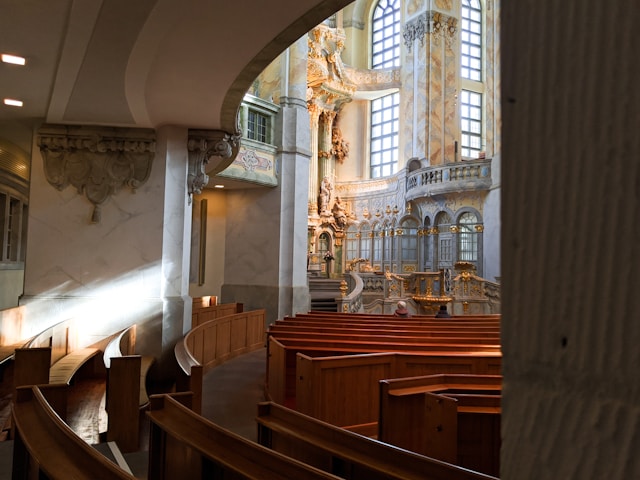
Calvary Baptist Church: A Comprehensive Guide
“`html
Calvary Baptist Church is a historic and vibrant evangelical church located in the heart of New York City. Founded in 1847, it has been a beacon of faith and community engagement for over a century and a half. This blog post will provide a comprehensive guide to Calvary Baptist Church, exploring its history, beliefs, ministries, and impact.
History and Legacy
Calvary Baptist Church traces its roots to a small group of Baptists who began meeting in 1847 on the Lower East Side of Manhattan. Over the years, the church has grown and relocated several times, eventually settling in its current location in Midtown Manhattan in 1910.
Key Events
- 1847: Church founded by Rev. Samuel H. Cone
- 1869: First permanent church building constructed
- 1907: Rev. John Roach Straton becomes pastor
- 1910: Church moves to its current location
- 1946: Rev. Billy Graham preaches at Calvary Baptist Church
Beliefs and Theology
Calvary Baptist Church adheres to the doctrines of evangelical Christianity, emphasizing the Bible as the sole authority for faith and practice. The church’s beliefs include:
Core Tenants
- The Trinity: God is one God in three persons: the Father, the Son, and the Holy Spirit
- The Deity of Christ: Jesus Christ is the eternal Son of God who became fully human
- The Atonement: Jesus Christ died on the cross to pay the penalty for our sins
- Salvation by Faith: We are saved by grace alone through faith in Jesus Christ
- The Resurrection: Jesus Christ rose from the dead and ascended to heaven
Ministries and Outreach
Calvary Baptist Church offers a wide range of ministries and outreach programs to meet the needs of its members and the surrounding community. These include:
Ministries
- Sunday School: Bible study classes for all ages
- Worship: Traditional and contemporary worship services
- Discipleship: Small groups and mentoring programs
- Evangelism: Outreach programs to share the gospel
- Social Justice: Ministries addressing issues such as poverty and homelessness
Outreach Programs
- Food pantry
- Clothing drive
- Soup kitchen
- Tutoring and mentoring
- Community events
Impact and Influence
Calvary Baptist Church has had a significant impact on the city of New York and beyond. The church has:
Historical Contributions
- Promoted social reforms, such as the abolition of slavery
- Played a key role in the founding of several colleges and universities
- Hosted major religious and cultural events
Contemporary Influence
- Continues to be a vibrant and active congregation
- Provides a safe and welcoming space for people of all backgrounds
- Promotes interfaith dialogue and collaboration
Conclusion
Calvary Baptist Church is a thriving evangelical church with a rich history and a commitment to serving its members and the surrounding community. Its beliefs, ministries, and outreach programs have made a lasting impact on the city of New York and beyond. Whether you are seeking spiritual growth, community involvement, or a place to serve others, Calvary Baptist Church is a place where you can find a home and make a difference.
“`

Sunday Catholic Mass Today: A Comprehensive Guide
Introduction
Sunday Mass, the central liturgy of the Catholic Church, is a sacred gathering where Catholics come together to worship God and receive the Eucharist. Understanding the various aspects of Sunday Mass can deepen your appreciation for this important sacrament.
Structure of Sunday Mass
- Introduction: Greeting, Penitential Act, and Gloria
- Liturgy of the Word: Readings, Responsorial Psalm, Gospel, and Homily
- Liturgy of the Eucharist: Offertory, Eucharistic Prayer, Consecration, Communion, and Prayer After Communion
- Concluding Rites: Blessing, Announcements, and Dismissal
Introduction
The Mass begins with a greeting from the priest, followed by the Penitential Act to prepare the congregation for the Eucharist. The Gloria, an ancient hymn, is sung to glorify God.
Liturgy of the Word
This section includes readings from the Old and New Testaments, the singing of a Responsorial Psalm, the reading of the Gospel, and a Homily (sermon) by the priest.
Liturgy of the Eucharist
The Eucharist is the heart of the Mass. The Offertory involves the presentation of bread and wine as gifts to God. During the Eucharistic Prayer, the priest consecrates the bread and wine, transforming them into the Body and Blood of Christ.
Consecration
The Consecration is the most sacred moment of the Mass, when the bread and wine become the real presence of Christ. The congregation kneels in reverence.
Communion
After the Consecration, the priest distributes Communion (the Body and Blood of Christ) to the congregation. It is an opportunity for Catholics to receive the grace and nourishment of the Eucharist.
Concluding Rites
The Mass ends with a Blessing from the priest, announcements, and the Dismissal, where the congregation is sent forth to live out the teachings of the Gospel.
Meaning and Importance of Sunday Mass
- Encounter with Christ: Mass is a personal encounter with Jesus Christ in the Eucharist.
- Sacrifice and Renewal: It commemorates the sacrifice of Christ on the cross and renews the Covenant between God and humanity.
- Community Building: Mass is a gathering of the Catholic community, fostering unity and support.
- Spiritual Nourishment: The Eucharist provides spiritual sustenance and nourishment for the soul.
Tips for Meaningful Participation
For a more meaningful participation in Mass, consider these tips:
- Come prepared: Read the readings beforehand and reflect on their meaning.
- Be present: Focus on the liturgy and minimize distractions.
- Participate actively: Join in the responses, songs, and prayers.
- Receive Communion: If you are a baptized Catholic, receive Communion regularly to receive the grace and nourishment of the Eucharist.
Frequently Asked Questions
- What is the difference between the Ordinary Form and the Extraordinary Form of Mass?
- The Ordinary Form, also known as the Novus Ordo, was introduced in 1969 and is the most common form of Mass today. The Extraordinary Form, also known as the Traditional Latin Mass, is an older, more traditional form of the Mass.
- Who can receive Communion?
- Baptized Catholics who are not conscious of any serious sin may receive Communion.
- What should I wear to Mass?
- Dress modestly and respectfully, as a sign of reverence for the Eucharist.
Conclusion
Sunday Catholic Mass is a sacred and transformative experience that brings Catholics together in worship and communion with God. Understanding the structure, meaning, and importance of Mass can deepen your appreciation for this foundational sacrament. By participating actively and meaningfully, you can receive the grace and nourishment that Mass offers.
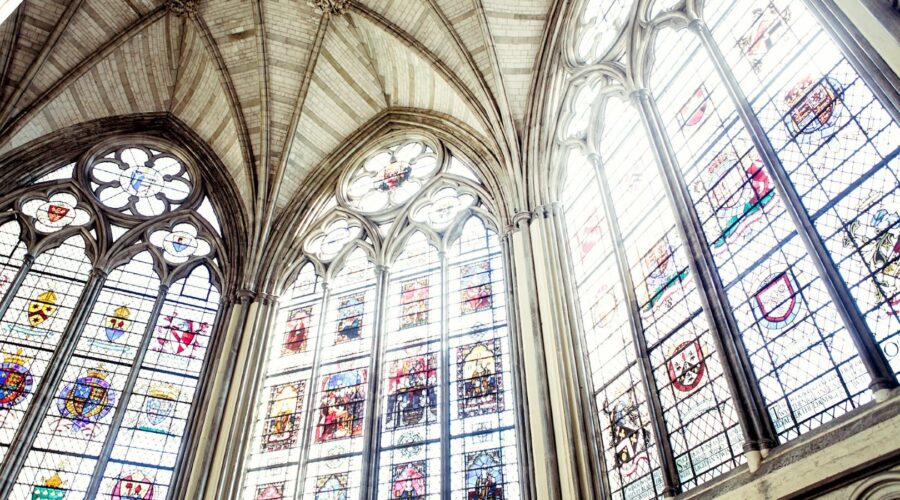
First Presbyterian Church: A Comprehensive Guide
Introduction
The First Presbyterian Church holds a significant place in the annals of Christianity, embodying a rich history, unwavering faith, and a commitment to serving its congregation and community. As the first Presbyterian congregation established in the United States, it has played a pivotal role in shaping the religious landscape of the nation. This comprehensive guide delves into the history, beliefs, mission, and various aspects of the First Presbyterian Church, providing valuable insights into its impact and enduring legacy.
Historical Context
Foundation and Early Years
The First Presbyterian Church was established in Philadelphia, Pennsylvania, in 1697 by a group of Scottish Presbyterians led by the Reverend George Keith. These settlers sought to establish a congregation that adhered to the beliefs and practices of the Presbyterian Church of Scotland. The church initially met in a private home before constructing its first building in 1704 on Arch Street.
Growth and Expansion
In the 18th century, the church experienced significant growth and expansion. Under the leadership of prominent pastors such as Gilbert Tennent and John Witherspoon, the congregation expanded its reach and influence. Tennent’s fiery sermons contributed to the Great Awakening, a religious revival that swept through the American colonies.
Revolutionary Era
During the American Revolution, the First Presbyterian Church played a pivotal role. John Witherspoon, a signer of the Declaration of Independence and a delegate to the Continental Congress, used his oratorical skills to advocate for American independence. The church also served as a meeting place for the Continental Congress.
Beliefs and Practices
Presbyterian Theology
The First Presbyterian Church adheres to the Westminster Confession of Faith and the Westminster Catechisms, which define the core beliefs of Presbyterianism. These documents emphasize the sovereignty of God, the depravity of humanity, and the atoning sacrifice of Jesus Christ. The church also embraces the principle of representative government, with elders and deacons elected by the congregation to oversee its affairs.
Worship Services
Worship services at the First Presbyterian Church are characterized by a blend of traditional and contemporary elements. The liturgy includes hymns, prayers, Scripture readings, and sermons. The church also incorporates multimedia elements and contemporary worship songs into its services.
Sacraments
The church observes two sacraments: baptism and the Lord’s Supper. Baptism is administered to infants and adults as a sign of God’s grace and forgiveness. The Lord’s Supper, also known as communion, is a remembrance of Jesus’ sacrifice and a symbol of unity among believers.
Mission and Outreach
Community Involvement
The First Presbyterian Church is deeply committed to serving its community. It operates a variety of outreach programs, including a food pantry, a homeless shelter, and a job training program. The church also partners with other organizations to address social issues such as poverty, homelessness, and addiction.
Global Missions
The church supports mission work around the world through partnerships with Presbyterian missionaries and organizations. These efforts focus on evangelism, education, and healthcare, seeking to spread the gospel and make a positive impact on communities in need.
Architecture and Historical Significance
The First Presbyterian Church is housed in a beautiful and historically significant building at 201 South Third Street in Philadelphia. The current structure, completed in 1855, is an example of Gothic Revival architecture and is listed on the National Register of Historic Places.
Notable features of the building include its high vaulted ceilings, stained glass windows, and intricate woodwork. The church’s sanctuary is particularly impressive, with its grand pulpit and elaborate organ. The building has undergone several renovations over the years, but it retains its original charm and grandeur.
Conclusion
The First Presbyterian Church stands as a testament to the enduring power of faith and the transformative impact of the Christian message. Throughout its long history, the church has remained a beacon of hope and a catalyst for positive change in Philadelphia and beyond. Its commitment to biblical teaching, community service, and global missions continues to inspire and motivate generations of believers.
As the first Presbyterian congregation established in the United States, the First Presbyterian Church holds a special place in the hearts of Presbyterians and Christians alike. Its legacy of faith, service, and architectural beauty is a source of pride for the congregation and a valuable asset to the city of Philadelphia.
FAQs
Q: What is the address of the First Presbyterian Church?
A: 201 South Third Street, Philadelphia, PA 19106
Q: When were the current building and sanctuary completed?
A: 1855
Q: What are the core beliefs of the Presbyterian Church?
A: Sovereignty of God, depravity of humanity, atoning sacrifice of Jesus Christ
Q: What types of outreach programs does the church operate?
A: Food pantry, homeless shelter, job training program
Q: Is the church building listed on the National Register of Historic Places?
A: Yes